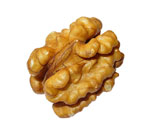More aggressive treatment strategies for extreme VTE needed
Posted by: admin on: October 10, 2011
Other therapies, such as the use of fibrinolytic drugs, catheter-based interventions, surgery or use of vena cava filters, should be considered in addition to blood thinners when treating certain patients with deep vein thrombosis and pulmonary embolism, according to a scientific statement published in the March 21 issue of Circulation.
“Venous thromboembolism (VTE) is responsible for the hospitalization of more than 250,000 Americans annually and represents a significant risk for morbidity and mortality,”
“Despite the publication of evidence-based clinical practice guidelines to aid in the management of VTE in its acute and chronic forms, the clinician is frequently confronted with manifestations of VTE for which data are sparse and optimal management is unclear.”
The current guidelines cover “extreme forms” of venous thromboembolism including massive and submassive pulmonary embolism (PE), iliofemoral deep vein thrombosis (IF-DVT) and chronic thromboembolic pulmonary hypertension (CTEPH).
For PE, McMurtry and colleagues outline risk stratification tools–clinical scores, echocardiography, elevated troponins, elevated natriuretic peptides, CT scan, electrocardiography, among others–that can help identify patients who are at a minimal or very high risk risk for morbidity or mortality.
The recommendations discuss various treatment methods for these types of conditions. While anticoagulation is indicated for most patients, more aggressive therapies such as fibrinolytic drugs, open surgery or endovascular techniques are discussed. As for iliofemoral DVT, thrombolytic medicines and percutaneous surgical procedures were discussed.
While the guidelines outlined that catheter-directed thrombolysis may be a viable treatment strategy for patients with IF-DVT, only experienced operators should perform these catheter-based interventions
McMurtry said the statement will help clinicians identify patients who will benefit from these more aggressive types of treatments or invasive therapies and identify patients who would not benefit from these more “risky” types of therapies.
“A major role of this document is to highlight that there are gaps in the evidence in this area so we will hopefully inspire more research to be done to answer these questions,” McMurtry concluded.
We strongly advise further clinical trials of the advanced therapies for VTE reviewed here,”
Read more on: http://www.cardiovascularbusiness.com/index.php?option=com_articles&view=article&id=26843&division=cvb
Search
- drchasrani: Difficult to get such a data, authenticated at that. Try Times of India online library
- rakesh pore: hi, where can i get genuine information about "10 most common drugs sold in india?" i want it for a local project
- nilesh dutta: sir, Plz give detail about MBA Sports Management Thanks and Regards


Leave a Reply